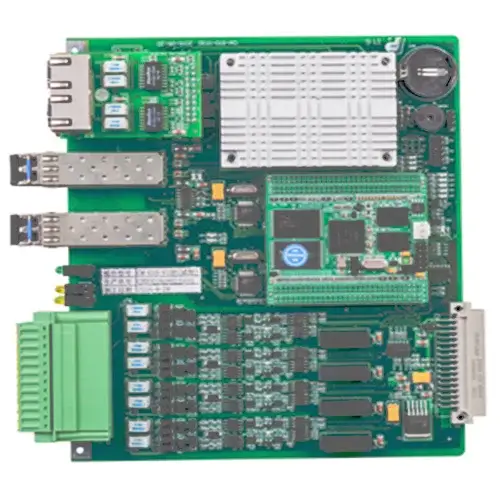
Industrial control PCBs play an important role in industrial automation; they power systems such as factory robots, process control equipment and even manage power grids.
Hence, these PCBs are the backbone of most modern industrial processes, facilitating correct control and automation of machinery and processes.
The PCBs tend to function in a very critical application, and hence, they are most prone to several harsh conditions. They are constantly subjected to heavy vibration from machinery, extreme temperature fluctuations, and involvement in the dangerous influence of dust, chemicals, and moisture in an industrial setting.
These are highly demanding conditions that require not only a reliable PCB but also one that’s resilient enough to provide consistent performance over a very long time.
Industrial control PCBs require conformation to very high quality standards during manufacturing and assembly. The IPC-A-610 specifies the acceptability criteria for electronic assemblies, ensuring that the PCBs meet stern reliability benchmarks and high performance.
Furthermore, standards like IEC 60068-2 on environmental testing and UL 508A on industrial control panel safety run a gamut of other issues that help protect the PCB against environmental stresses while ensuring operational safety.
Material selection surfaces as one of the most important things if a PCB design is to survive in an industrial environment. Among these, there are high-performance base materials that are picked for their excellent thermal properties that make them fit enough to manage temperature variations without affecting performance.
Flame-retardant materials meet the requirements in ensuring safety, hence eliminating the risks associated with fire in an industrial setting.
Moreover, the high resistance of materials to moisture, dust, and chemicals gives the PCBs a long life, hence the assurance of reliability in critical industrial processes.
At the moment of PCB design for an industrial control system, several factors are critical in trying to achieve optimal performance, reliability, and life when working in harsh environments.
Designing industrial control PCBs for reliability means choosing suitable quality components and ensuring proper thermal management facilities.
There will be adequate spacing, and heat dissipation techniques will be so effective that the risk of failure of any component is minimized, making them suitable for long-lasting performance with reduced maintenance requirements.
Industrial control PCBs should ensure minimum electromagnetic interference to work with other electronic systems simultaneously.
Proper PCB layout, shielding of critical signals, and filtering components secure the EMC, preserving signal integrity and system stability in industrial environments.
Mechanical strength is needed industrially, and so PCBs will make use of high mechanical strength materials, together with secure mounting techniques.
The design takes into consideration that Vibrations affect the solder joints and components; such considerations reduce these effects to ensure reliable electrical connections and increase lifespan.
Proper heat management in an industrial control PCB can negate the condition of overheating, and optimum operational performance is ensured. Strategic spacing of thermal vias, fixing heat sinks, and optimizing airflow inside the enclosure often spell a clear way out for effective dissipation to achieve reliability and enhance life.
Now let’s understand the industrial control PCB manufacturing process in detail.
This is how industrial control PCB manufacturing works:
First and foremost, designers very cautiously choose the materials according to the needs of heat, electricity, and strength.
They may make use of advanced materials and techniques such as laser drilling to make tiny holes for tightly connecting parts to squeeze complex circuits into small spaces.
Making a printed circuit board involves pressing together layers of material with copper under heat and pressure. The circuit patterns in these layers are then etched using a chemical and laser treatment.
The layers are then stacked and heated to create a solid board. The exact process on the other side completes the circuits.
In making a PCB, very strict controls are put in place for consistency and quality. They check sizes, materials, and how everything lines up to ensure that people get the highest possible performance and maximum reliability from each PCB produced.
After PCBs are manufactured, special tools are used to examine them for problems. X-rays look inside to find any holes or mistakes, especially in complex parts.
Optical inspections check the surface for missing parts, mistakes in how things were placed, or problems with soldering.
Here are some specialized assembly techniques used in industrial control PCBs:
High-precision pick-and-place machines are used with industrial control PCB assembly to facilitate accuracy in placing components. These machines deal with rugged components, like resistors, capacitors, and ICs, and put them correctly on the board.
This is important because of the roughness of industrial environments—it might be boiling or have vibrations. The proper placement gives assurance of reliability under such circumstances.
Controlled soldering processes are utilized to ensure the strength of connections on industrial control PCBs. On its part, lead-free solders are utilized to ensure that environmental legislation is observed and stronger joints are created. There are two standard methods in use, which include:
Protection is required for the PCBs against latch-up due to moisture, chemicals, dust, and extreme temperatures.
The advanced conformal coating protects by:
These techniques ensure that the industrial control PCBs work perfectly during the most undesirable conditions of factories and machinery. They make operations very smooth and reliable in the face of any challenges.
In a nutshell, the industrial control PCB manufacturing process requires essential detail and strict standardization. These crucial PCBs are necessary for machines to run systems under severe working environments.
This ranges from the choice of suitable materials to advanced methods for applying protective coats, accurate assembly of parts, and other stages associated with ensuring PCBs work perfectly and are long-lasting.
Fill in your requirement information and upload Gerber and BOM files, we will give you a quote within 24 hours.
Fill in your requirement information and upload Gerber and BOM files, we will give you a quote within 24 hours.